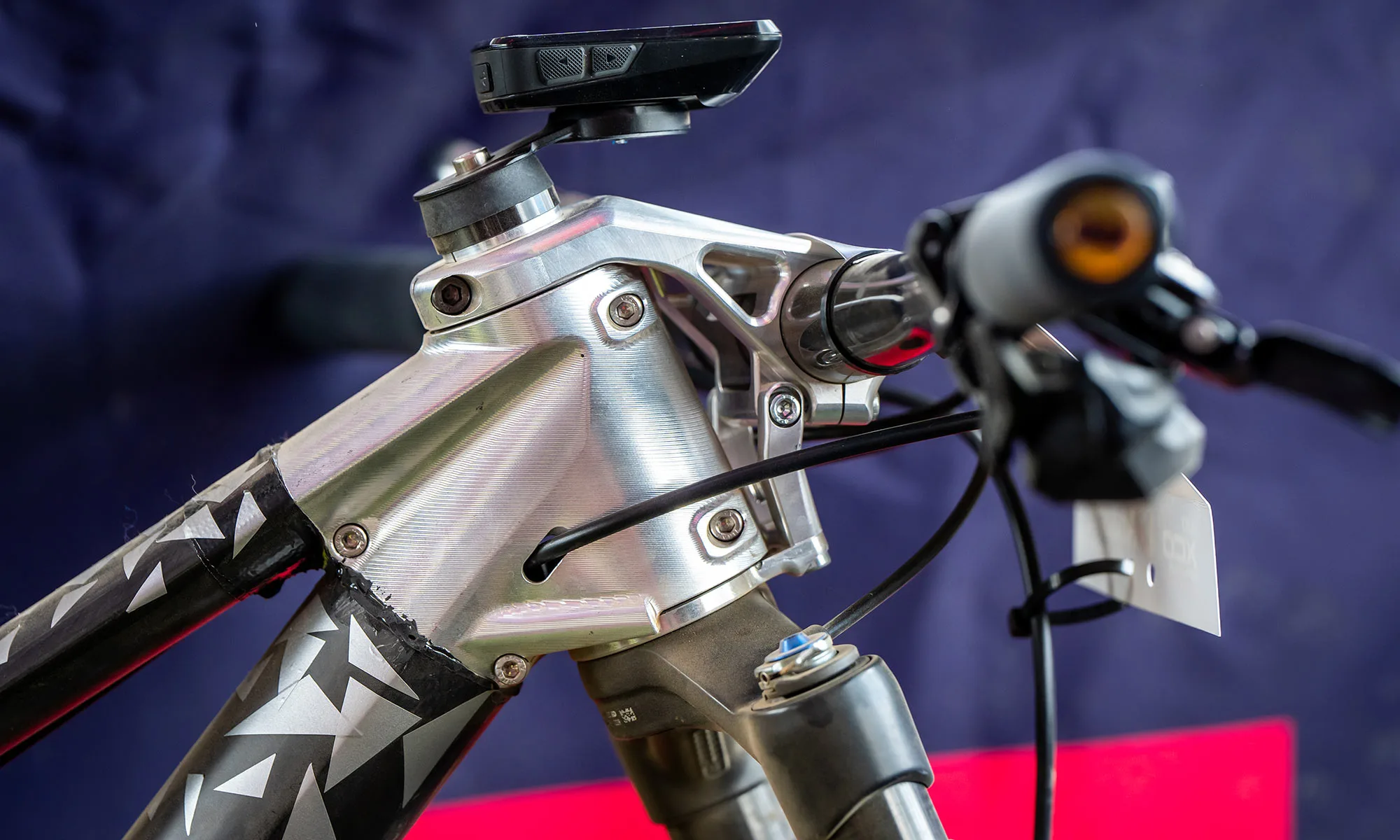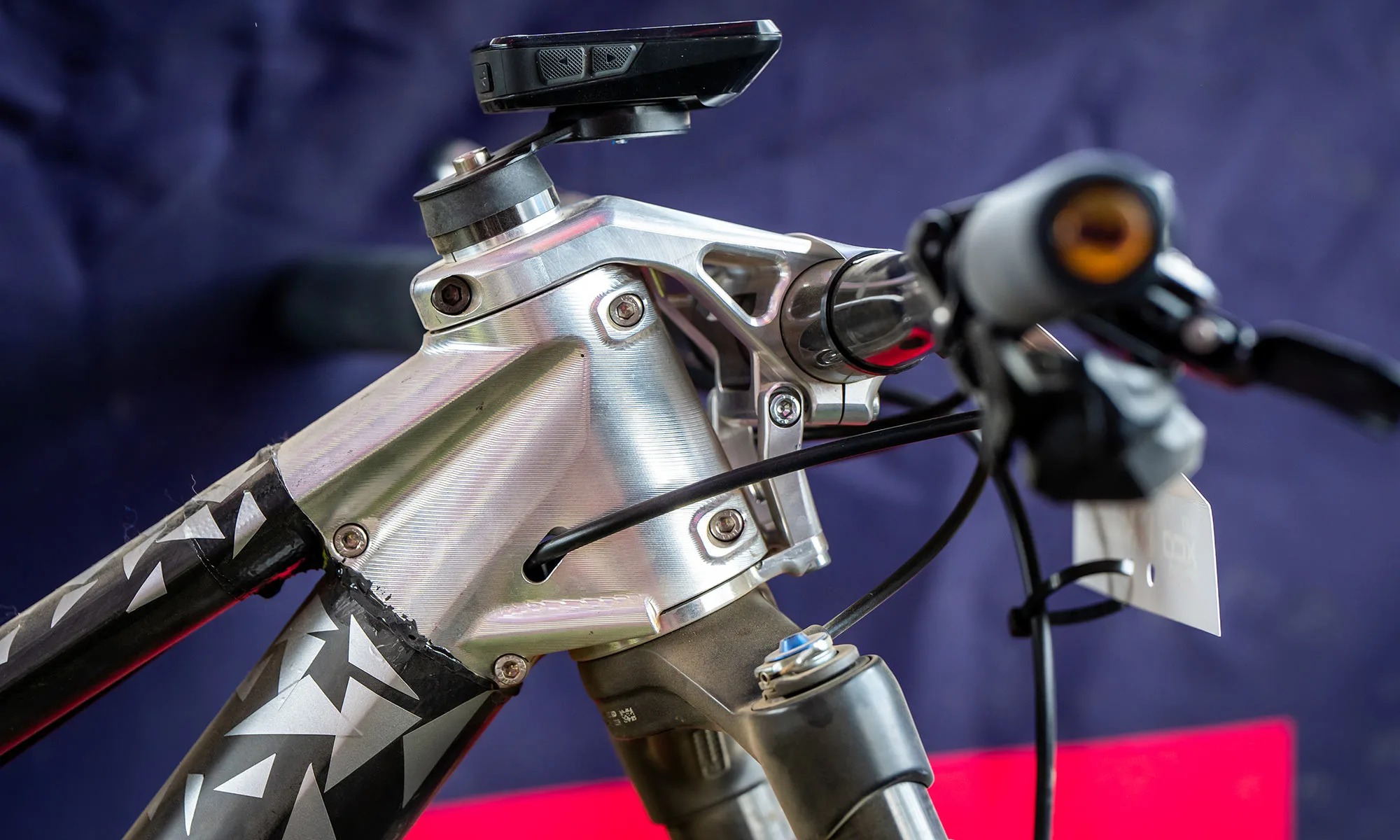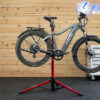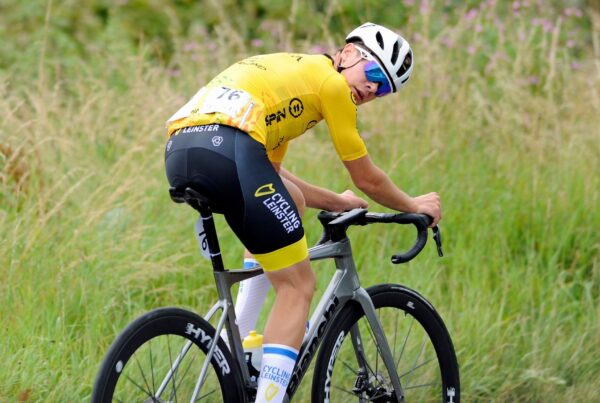
.
.
.
#BMCProjectFahrenheit #32inchMTB #Frankenbike #MountainBikeInnovation #XCPrototype #FreestyleMTB #ImpecLab #BMCFourstroke #AndorraWorldCup #Maxxis32inch #MTBR&D #MountainBikeWheels #DTSwissFork #CyclingTech #MTBPrototype
Source link
BMC, a prominent name in the cycling industry, is diving headfirst into the emerging trend of 32″ mountain bike wheels with their experimental Project Fahrenheit. Built from a modified BMC Fourstroke XC bike, this prototype represents a bold exploration of whether larger wheels could revolutionize cross-country (XC) racing. While 29″ wheels are currently the standard for XC bikes, BMC’s Impec Lab R&D team is testing the potential of 32″ wheels to see if they offer significant performance advantages—or if they’re simply a gimmick.
The Genesis of Project Fahrenheit
The project began when BMC’s Impec Lab engineers decided to investigate the feasibility of 32″ wheels for XC racing. This initiative was driven entirely by the engineering team, not the BMC Factory Racing XC squad. The engineers took a standard medium-sized carbon Fourstroke XC bike, chopped it up, and reassembled it with custom aluminum frame junctions to accommodate the larger wheels. The result is a frankenbike that maintains the Fourstroke’s geometry while exploring the potential of 32″ wheels.
Interestingly, BMC has no immediate plans to bring a 32″ Fourstroke to market. This project is purely an R&D effort to understand the pros and cons of larger wheels. However, if the concept proves viable and the necessary components—like wheels, tires, and suspension forks—become more widely available, BMC wants to be prepared to capitalize on the trend.
Challenges of Building a 32″ XC Bike
Creating a 32″ XC bike involves significant engineering challenges. BMC’s Impec Lab had to cut and modify the frame extensively, including removing the headtube, bottom bracket, and rear dropouts, and slicing the toptube. Custom aluminum clamps were CNC-machined to reconnect the frame while preserving its geometry.
Components are another hurdle. Suspension forks, wheels, and tires for 32″ bikes are not yet widely available. BMC modified a DT Swiss F 232 One fork with bolt-on dropout extensions to accommodate the larger wheels. They also designed a unique stem to lower the handlebar position, compensating for the increased stack height caused by the larger wheels.
Testing in Andorra
BMC took the prototype to Andorra’s World Cup racetrack to test its performance in real-world conditions. The location was chosen not only for its challenging terrain but also to showcase BMC’s rapid R&D capabilities to competitors. The bike was tested back-to-back against a standard 29″ Fourstroke to compare performance.
Early impressions suggest that the 32″ wheels offer improved grip on rooty terrain and better support through the suspension’s travel. However, BMC acknowledges that 32″ wheels may not suit smaller riders, as the increased wheel size raises the bike’s ride height, requiring creative solutions like the custom stem to maintain rider comfort.
Why 32″ Wheels?
The jump from 29″ to 32″ wheels is substantial. While 29″ wheels have a bead seat diameter (BSD) of 622mm, 32″ wheels measure 686mm—a 64mm increase. This translates to a ride height increase of about 32mm (1.25″), requiring longer chainstays and fork legs. The overall wheelbase could grow by 64mm (2.5″), significantly altering the bike’s handling.
Despite the size increase, BMC’s engineers took a conservative approach, making minimal geometry changes to isolate the effects of the larger wheels. Their goal is to determine whether the benefits—such as improved rolling efficiency and stability—outweigh the drawbacks, like increased weight and reduced maneuverability.
Industry Interest in 32″ Wheels
BMC isn’t alone in exploring 32″ wheels. Maxxis has already developed a 32″ Aspen XC race tire and reportedly has two other tread patterns in the works. Other brands, like Faction Bike Studio and DirtySixer, are also working on 32″ projects, with DirtySixer teasing a full-suspension 32er. These developments suggest that the industry is taking the potential of 32″ wheels seriously.
Unanswered Questions
While BMC’s Project Fahrenheit is a significant step forward, many questions remain. Will 32″ wheels benefit all riders, or only larger ones? How will suspension travel, tire pressure, and damping need to adjust? Should bike geometry become steeper to balance the larger wheels’ stability? And can components like tires, rims, and frames be made lighter to offset the increased weight?
BMC’s Impec Lab is just beginning to explore these questions. Their goal is to gather real-world data and feedback to determine whether 32″ wheels have a place in the future of XC racing.
Looking Ahead
For now, 32″ BMC bikes are not available for purchase, and it may be years before they hit the market—if ever. The project is a testament to BMC’s commitment to innovation and their willingness to explore unconventional ideas. Whether 32″ wheels become the next big thing or remain a niche experiment, BMC’s Project Fahrenheit is a fascinating glimpse into the future of mountain biking.








